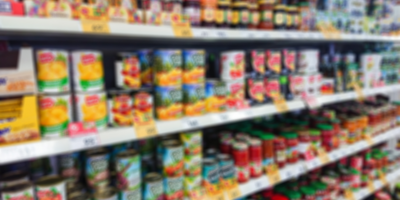
Reformulation Program needs major overhaul to be effective
In the second of a three-part series on the Australian Government’s Healthy Food Partnership Reformulation Program, Emalie Rosewarne explores how the latest reformulation targets can be improved.
Next time you’re at your local supermarket, check out the shelves. You may notice they are dominated by convenient, inexpensive, processed foods. Most options are high in energy and low in nutritional value. This kind of food environment makes it difficult to make informed and healthy food choices, leading to increasing rates of obesity and other health conditions.
Reformulation programs are one way to improve the food environment. This is done by manufacturers improving the nutrient content of processed foods. They do this by reducing harmful nutrients, such as sodium, sugar and saturated fats, and increasing beneficial nutrients, such as fibre. In May 2020, the Federal Government’s Healthy Food Partnership (the Partnership) released the first wave of food reformulation targets for Australia. It’s encouraging to see this action, but unfortunately on review they don’t go far enough.
When setting food reformulation targets, it is crucial to use up-to-date and comprehensive nutrition information on the food supply. This guarantees that targets are feasible and will have a real impact on the healthiness of foods available on our local supermarket shelves.
The George Institute for Global Health has a comprehensive food database, FoodSwitch, which we use to see if the proposed reformulation targets have an impact. We’ve found that most of the proposed targets are far too lenient.
Many unhealthy products already meet the proposed targets. The bar has been set too low. This is a missed opportunity to improve the food supply.
Some of the worst offenders were sodium targets for breakfast cereals, plain corn/rice cakes and cheddar/cheddar-style cheeses. FoodSwitch data shows more than 75% of products in these categories are already meeting the targets. Likewise, more than 66% of products are already meeting the proposed sugar targets for breakfast cereals and sweetened yoghurts.
Overall, stricter reformulation targets could be set for more than half of the proposed food categories, in order to make a valuable step towards improving the nutritional content of our food supply.
Sodium, sugar and saturated fat levels need to be reduced in all processed foods to help Australian tastebuds adapt to a healthier food supply. Reformulation targets should therefore be set for most packaged food categories available for sale, not just a few. The Partnership only set targets for 30 categories for sodium, seven categories for sugar and five for saturated fat. This was because the Partnership only considered foods contributing 1% or more to Australians’ sodium, sugar and/or saturated fat intake. However, FoodSwitch data showed that less than 20% of packaged foods currently available would have a target – likely not enough to have any real impact. In comparison, the United Kingdom has targets for 76 categories for sodium and 14 categories for sugar – surely Australia could have at least started there.
If not the whole food supply, reformulation targets should at least cover products that contain excessive quantities of sodium, sugar and saturated fat and are commonly consumed. We identified foods that Australians love, including some that are popular with different groups of Australians, that are missing reformulation targets, such as spreads, dips and instant noodles. It is no good for Australian consumers to have targets set on foods we do not regularly stock in our fridge or pantry, as they will have no impact on our nutrition.
Australians deserve healthier food choices, but supermarket shelves are still full of processed, low nutrition foods. Whilst the first wave of targets is a good first step, it is unlikely the Partnership’s current Reformulation Program will be enough to meaningfully improve diets.
Emalie Rosewarne is an Accredited Practising Dietitian (APD) within The George Institute for Global Health’s Food Policy Division. In 2019, Emalie commenced a PhD at UNSW on evaluating nutrition programs to change the food environment in Australia. Emalie holds a Bachelor of Science (BSc) and a Master of Nutrition and Dietetics (MNutrDiet) from The University of Sydney.








